
Recent poll held in Israel proved that Jewish and Zionist Israelis are all the same in their inhuman savagery against Palestinian civilians. (Photo: MINA File)
JEWISH AND ZIONIST ISRAELIS ARE ALL THE SAME IN THEIR INHUMAN SAVAGERY AGAINST PALESTINIANS
by Syarif Hidayat*
Israeli genocide against poorly-defended Palestinians in Gaza by using all kind of modern and deadly war machines and weaponry have proved that the Zionist entity is really a deadly and murderous society. The recent poll held in Israel has also proved that Jewish and Zionist Israelis are all the same in their barbaric brutalities and inhuman savagery against civilians in Gaza and the West Bank, Palestine.
“Though it is certain that there is no ethnic or racial continuum between the Biblical Israelites and the Khazarians who lead the Jewish state and its army, the similarities between the murderous enthusiasm described in Deuteronomy and the current string of Israeli lethal actions cannot be denied. Israel is a murderous society not because of any biological or racial lineage with its imaginary ‘forefathers’. Israel is deadly because it is driven by a fanatical tribal Jewish ideology and fueled by a psychotic merciless Biblical poisonous enthusiasm.” – Gilad Atzmon, an Anti-Zionist Israeli activist.
Also Read: Boycott of Zionism, The Most Powerful Weapon
THE ZIONISTS ARE THE REAL TERRORISTS AND THE DEVILS FORCES!: The Zionists are terrorizing and torturing Palestinians as well as committing Genocide against the Palestinians, creating Palestinian Holocaust, stealing their lands and properties as well as destroying their homes on daily basis with the US full support (financially, economically, politically and militarily) to the tune of three to five billion dollars a year, while at the same time, they continue to complain to the world especially the Washington regime and the US-led western regimes — their captive markets for their propaganda stuffs — that the Palestinians are terrorists!
Majority of Jewish Israelis support barbaric killings in Gaza
An overwhelming majority of Jewish Israelis think that the Israeli occupation regime army used either the “appropriate” level of force or “too little firepower” during its latest aggression, dubbed “Operation Protective Edge”, in the Gaza Strip. A majority also expressed their support for the government’s restrictions on the freedom of expression during the war, as well as for the mediation efforts led by the post-coup government in Egypt, according to Middle East Monitor (MEMO) report.
According to the latest poll for the Peace Index, which is conducted by the Israel Democracy Institute and the University of Tel Aviv, 48 per cent of Israeli Jews believe that the force used by the army was appropriate, while 45 per cent actually think that too little force was used. Only 6 per cent said that Israel used excessive force against the Palestinians.
Also Read: Nuclear Technology: Harm and Benefit from the Qur’anic Perspective
The Israeli government barred Israeli reporters from entering into Gaza to cover the war, thus Israelis were not exposed to the horrors taking place in the Strip. Israeli strikes have left more than 2,000 dead and 10,000 wounded, in addition to causing massive destruction to civil infrastructure, homes and businesses, leaving many without a place to sleep or work.
On another note, 97 per cent of the Jewish Israeli respondents said that the performance of the Israeli army during the operation was “was very or moderately good”, while only 3 per cent rated the army’s performance as “as not so good or poor”. 58 per cent said they were in favour of limiting the freedom of expression during times of war, while 39 per cent believe that these restrictions are unnecessary.
92 per cent of the Jewish population said the aggression on Gaza was “justified” while 58 per cent said that Israel should not respond to any of Hamas’s demands for a ceasefire and instead should continue fighting until the Palestinian resistance movement surrenders. Some 44 per cent believe that Israel has achieved most of its goals as a result of the war on Gaza, while 48 per cent said that only some of the goals set for the operation have been achieved and 6 per cent said that Israel did not achieve anything from this operation. As for the Arab Israeli citizens, 65 per cent believe that no goals have been achieved.
Regarding the mediation efforts in Cairo, 60 per cent of Israeli Jews trust Egypt’s President Abdel Fatah Al-Sisi “to act as a fair mediator”, with only 38 per cent not trusting him. On the other hand, 55 per cent of Israeli Arabs do not trust President Al-Sisi, while 31 per cent trust him to mediate the conflict.
Also Read: Gaza Cries Out, the World Stays Silent: A Wounded Humanity
 Israeli massacres against Gazan families
Israeli massacres against Gazan families
Max Blumenthal in his article titled “Reports of Israeli massacres against Gazan families surface,” published in www.alternet.org and www.muslimvillage.com writes “As the five-day ceasefire between Israel and Hamas took hold on August 15, residents of Shujaiya returned to the shattered remains of their homes. They pitched tents and erected signs asserting their claim to their property, sorting determinedly through the ruins of their lives.”
Those who managed to survive the Israeli bombardment have come home to bedrooms obliterated by tank shells, kitchens pierced by Hellfire missiles, and boudoirs looted by soldiers who used their homes as bases of operations before embarking on a series of massacres. Once a solidly middle-class suburb of Gaza City comprised of multi-family apartments and stately homes, the neighborhood of Shujaiya was transformed into a gigantic crime scene.
The attack on Shujaiya began at 11pm on July 19, with a combined Israeli bombardment from F-16s, tanks and mortar launchers. It was a night of hell which more than 100 did not survive and that none have recovered from. Inside the ruins of what used to be homes, returning locals related stories of survival and selflessness, detailing a harrowing night of death and destruction.
Also Read: Indo Defence Expo and Forum; Sharing Responsibility of Humankind and Environment
Outside a barely intact four-level, multi-family home that was hardly distinguishable from the other mangled structures lining the dusty roads of Shujaiya, I met members of the Atash family reclining on mats beside a makeshift stove. Khalil Atash, the 63-year-old patriarch of the family, motioned to his son heating a teapot above a few logs and muttered, “They’ve set us back a hundred years. Look at us, we’re now burning wood to survive.”
Khalil Atash led me inside the home to see the damage. The walls of the second floor that was to have been home to two of his newly married children had been blown off by tank shells. All that was left of the bathroom were the hot and cold knobs on the shower. On the next floor, four small children scampered barefoot across shattered glass and jagged shards of concrete. A bunk bed and crib were badly singed in the attack. But the damage could have been far worse.
As the attack on Shujaiya began, the Israeli army attempted to evacuate the Atash family, according to Khalil Atash, phoning them and ordering them out in Arabic. But the family was sure the call was a prank. When the army called again, a soldier exclaimed, “You think this is a joke? You have five minutes.” Three minutes later, an F-16 sent a missile through the roof. In an incredible stroke of luck, the missile did not explode. It remained lodged in the ceiling until a day prior to my visit, when a bomb detonation crew dismantled it.
I asked why the family remained in ruins when the army could attack again at any time. “We have nowhere else to go now,” Khalil Atash explained. “You only die once and we’re not afraid after what we’ve been through. So we just decided to live in our house.”
Also Read: Safiya Saeed: From Somali Migrant to First Hijab-Wearing Mayor of Sheffield
The Atash family was among only a small handful willing to brave the nights in an area that was comprehensively flattened. Shujaiya stood within the long swath of Gaza Strip towns and cities that had been rendered uninhabitable by Israeli bombardment. All of these areas had one thing in common: They abutted the vast buffer zone the Israeli military had established between its border and the Gaza Strip. By pounding neighborhoods like Shujiaya and cities like Beit Hanoun until nearly all of their residents were forced to flee west for shelter, Israel was tightening the cage on the entire population.
Sprint for Survival
Khalil Atash’s son, 30-year-old Tamer, related his story of survival.
“The missiles started getting closer and began to hit everywhere so randomly,” he recalled, detailing how the strikes on Shujaiya gradually intensified after the first hour. “So I just lost it. I was watching my neighbors die and I was so close to them, I felt like I was dead too. I had two choices: Either I die doing nothing at that house or do something about it. So I chose to do something.”
Tamer called an ambulance crew and begged the driver to help transport his family out of the attack. “All I can do is pray for you,” the driver told him. But other first responders rushed headlong into the maelstrom, risking their lives to save as many of the fleeing residents as they could. By this time, the neighborhood was engulfed in flames and shrouded in darkness Israeli forces had bombed all of its electricity towers. He and his family decided to make a run for it in the street. Neighbors followed closely behind them, embarking on a desperate sprint for survival as homes went up in flames around them.
Also Read: Why Food Safety is Essential During Hajj Services?
Relying on cellphone flashlights to illuminate their path, the fleeing residents rushed ahead under withering shelling. Tens of people fell every few hundred meters, Tamer told me. But they continued anyway, sprinting for a full kilometer until they reached safety close to Gaza City. As soon as he reached sanctuary, Tamer said he was overcome with guilt. Friends and neighbors were stuck in the neighborhood with no one to evacuate them. He decided to return to help anyone he could. “I’m from Shujaiyia, I have no other place to go, and we don’t own land,” he explained. “This is our only place here. So of course I came back.”
It was well past midnight, Shujaiya was in flames, and the Qassam Brigades Hamas’ armed wing was beginning to mobilize for a counterattack. “The situation outside was literally hell,” Tamer said.
In previous assaults on Gaza, Israeli forces met only light resistance. During Operation Cast Lead in 2008-09, when the army attacked Gaza’s civilian population with indiscriminate firepower, most Israeli casualties were the result of fratricide. But this time was different. With little more than light weapons at their disposal, uniformed Qassam fighters engaged the Israelis at close distances, sometimes just a few meters away, exposing a glaring weakness of the Middle East’s most heavily equipped, technologically advanced armies. During the battle, Qassam fighters scored a hit on an Israeli armored personnel carrier, killing five soldiers inside, then momentarily captured the fatally wounded Lt. Shaul Oron.
The loss of soldiers and the possible capture of Oron a situation that raised the specter of a politically devastating prisoner swap sent Israeli forces into a vengeful frenzy. “The F-16s were no longer up in the sky bombing us, they were flying just above the houses,” Tamer recalled. “It felt like an atomic bomb with four F-16s coming one way and another four from the opposite direction, weaving between the houses. At this point, we realized we were not surviving. We said our last prayers, and that was it. Because we know that when the Israelis lose one of their soldiers they become lunatics. We just knew they had suffered something, we could sense it.”
Also Read: Indonesia Sign Language Mushaf Qur’an; A Sustainable Gift in Celebrating Pancasila Birthday
Tamer watched some of his neighbors jump from fourth-floor windows as their homes burst into flames. Others rushed out in their night clothes, nearly nude, prompting him and other men to hand over their shirts and even their trousers to women scurrying half exposed through the darkened streets. After giving the shirt off his back to one woman, he gave his sandals to another who had sliced her feet open on rubble.
“Sure, I was crazy and stupid, but I just wanted for them to survive,” he said. “If I had to die, then fine, but someone had to make a sacrifice.”
By dawn, waves of survivors poured from Shujaiya into Gaza City. Sons had carried their fathers on their backs; mothers had hoisted children into lorries and ambulances; others searched frantically for missing family when they arrived, only to learn that they had fallen under the shelling. For many, it was another Nakba, a hellish reincarnation of the fateful days of 1948 when Zionist militias forcibly expelled hundreds of thousands of Palestinians from their land. This time, however, there was almost nowhere for the refugees to flee.
Evidence of Chilling Plans
Also Read: Leila Khaled, The Icon of Palestinian Women’s Resistance
Back in Shujaiya, the shelling momentarily subsided for a one-hour ceasefire. But the International Committee of the Red Cross proved unable to evacuate those trapped in the area, possibly because of the Israeli occupation regime army’s refusal to coordinate with its first responders or because the occupation regime army had targeted its ambulances in airstrikes. Thus the stragglers and wounded were at the mercy of Israeli occupation regime Golani Brigade special forces troops, which had taken up positions at the edge of Shujaiya, occupying homes just east of the area’s main mosque.
I visited almost a dozen homes occupied by Israeli occupation regime soldiers in eastern Shujaiya, wading through rubble and piles of shattered furniture in search of clues into the Israeli occupation regime plans of operation. I found floors littered with bullet casings, sandbags used as foundations for heavy machine guns, sniper holes punched into walls just inches above floors, and piles of empty Israeli snack food containers.
In the stairwell at the entrance to one home I visited, soldiers had engraved a Star of David. In another, soldiers used markers to scrawl in mangled Arabic, “We did not want to enter Gaza but terrorist Hamas made us enter. Damn terrorist Hamas and their supporters.”
I found a wall in another home vandalized with the symbol of Beitar Jerusalem, the Jerusalem-based football club popular among the hardcore cadres of Israel’s right-wing. Below the Beitar logo was the slogan, “Price Tag,” referring to the vigilante terror attacks carried out by Jewish settlers against Palestinians in the occupied West Bank.
Also Read: The Twilight of the Zionist Israeli State
In each home the soldiers occupied, I found walls etched with crude maps of the immediate vicinity. Each house was assigned a number, possibly to enable commanders to call in air and artillery strikes ahead of their forward positions. Names of soldiers, including those wounded or missing, were listed on several walls, but they were concealed with spray paint upon the troops’ departure.
In the ruins of a second-floor bedroom, in an empty ammo box under a tattered bed, a colleague discovered two laminated maps of Shujaiya. They were photographed by satellite at 10:32am on July 17, just days before the neighborhood was flattened. The date in the upper-right-hand corner of one map was written American-style, with the month before the day, raising the question of whether a US or Israeli occupation regime satellite had captured the image. Outlined in orange was a row of homes numbered between 16 and 29; the homes immediately to their west were labeled with arrows indicating forward troop movements.
A local man who had accompanied us into the house pointed at the homes on the map outlined in orange, then motioned out the window to where they once stood. Every single house in that row had been obliterated by airstrikes. I looked back at the map and noticed that the dusty field we faced was labeled in Hebrew, “Soccer Field.” Two areas just west of the field were marked, “T.A. South” and “T.A. North,” perhaps a cryptic reference to Tel Aviv. Devised at least two days before the assault, the map sectioned Shujaiya into various areas of operation, with color-coded delineations that were impossible to decipher but suggested disturbing intentions.
Eran Efrati, a former Israeli combat soldier turned anti-occupation activist, interviewed several soldiers who participated in the assault on Shujaiya. “I can report that the official command that was handed down to the soldiers in Shujaiya was to capture Palestinian homes as outposts,” Efrati wrote. “From these posts, the soldiers drew an imaginary red line, and amongst themselves decided to shoot to death anyone who crosses it. Anyone crossing the line was defined as a threat to their outposts, and was thus deemed a legitimate target. This was the official reasoning inside the units.”
Also Read: Prof. Abdul Fatah El-Awaisi and the Intellectual Roadmap for the Liberation of Al-Quds
In the area occupied by Israeli soldiers, the killing that had previously taken place by air and distant artillery assaults took on a gruesomely intimate quality. It was there, in the ruins of their homes, that returning locals told me of the cold-blooded execution of their family members.

Smoke and fire from the explosion of an Israeli air strike rise over Gaza City. At least 100 Palestinians killed in Israeli bombardment.(Photo: whitewraithe.wordpress.com)
Massacres in Broad Daylight
At the eastern edge of the “Soccer Field” now occupied by tents and surrounded by demolished five-story apartment complexes, I met Mohammed Fathi Al Areer. A middle-aged man wearing an eyepatch, he led me through the first floor of his home, which was now a virtual cave furnished with a single sofa, then into what used to be his backyard, where the interior of his bedroom had been exposed by a tank shell. It was here, Al Areer told me, that four of his brothers were executed in cold blood. One of them, Hassan Al Areer, was mentally disabled and had little idea he was about to be killed. Mohammed Al Areer said he found bullet casings next to their heads when he discovered their decomposing bodies.
Just next door was the Shamaly family, one of the hardest hit in Shujaiya. Hesham Naser Shamaly, 25, described to me what happened when five members of his family decided to stay in their home to guard the thousands of dollars of clothing stocks they planned to sell through their family business. When soldiers approached the home with weapons drawn, Shamaly said his father emerged from the home with his hands up and attempted to address them in Hebrew.
“He couldn’t even finish the sentence before they shot him,” Shamaly told me. “He was only injured and fainted, but they thought he was dead so they left him there and moved on to the others. They shot the rest my uncle, my uncle’s wife, and my two cousins they shot them dead.”
Miraculously, Shamaly’s father managed to revive himself after laying bleeding for almost three days. He walked on his own strength toward Gaza City and found medical help. “Someone called me to tell me he was alive,” Shamaly said, “and I thought it was a joke.”
Hesham Shamaly’s 22-year-old cousin, Salem, was also executed by the Israeli soldiers who had taken up positions in the neighborhood. When Salem Shamaly returned to his neighborhood during the temporary ceasefire at 3:30pm on July 20 to search for missing family members alongside members of the International Solidarity Movement (ISM), he apparently crossed the imaginary red line drawn by the soldiers. When he waded into a pile of rubble, a single shot rang out from a nearby sniper, sending his body crumpling to the ground. As he attempted to get up, another shot struck him in the chest. A third shot left his body limp.
The incident was captured on camera by a local activist named Muhammad Abedullah, then disseminated across the world by the ISM. Israeli military spokespeople were strangely silent. Back in Gaza City, where survivors of the Shamaly family had taken shelter in a relative’s apartment, Salem Shamaly’s sister and cousin received an emailed link to the video.
Over the next three minutes, they watched Salem die. They knew it was him because they recognized the sound of his voice as he cried out for help.
Despair and Resistance
In an apartment on Remad Street in Gaza City, I met the parents, siblings and cousins of Salem Shamaly. They had been forced to relocate here after their home was completely obliterated by Israeli tank shells and drone strikes in Shujaiya. The apartment was crowded but impeccably clean. It was a more desirable arrangement than one of the UN schools where most of their neighbors lodged in squalid conditions with little to no privacy, though no less an indignity.
Salem Shamaly’s father, 62-year-old Khalil, said the family evacuated Shujaiya at 8am. As soon as they reached safety, they realized Salem was missing. “It’s impossible to put into words how difficult it was,” Khalil Shamaly said. “We waited for two or three days not knowing and when we found out, it was too difficult to handle. I have had to call on God and he helped me.”
The attacks on Shujaiya continued for days, making it impossible for the Shamaly family to retrieve Salem’s body. They beseeched the ICRC for help but after so many attacks on their vehicles from the Israeli army, which had declared all of Shujaiya a “closed military zone,” they were unwilling to approach the area. Salem’s father, Khalil, still believes his son might have been saved if he was evacuated right away.
When Salem’s family finally retrieved his body, they found it badly burned, almost unrecognizable, and tossed dozens of meters from the location where he had been killed by subsequent bombardments. The death toll had reached such unbearable levels he could not be buried in Shujaiya, where the cemetery was overfull. When Shamaly’s finally found a place to bury him, they had to open a pre-existing grave because that cemetery was also full. This was just one of many stories I heard this week of a rushed burial, a family thrown into chaos, and a young life truncated and denied dignity in death.
Salem’s cousin, Hind Al Qattawi, whipped out a laptop and played for me a clip of a report on the killing by NBC’s Ayman Mohyeldin. Al Qattawi had wanted to demonstrate for me the international impact the incident made, but instead, she summoned barely submerged emotions back to the surface. As soon as the video of Salem’s murder began to play, his mother, Amina, sobbed openly. “The real problem is not just losing your home in the bombardment,” Muhammad Al Qattawi, the brother of Hind, told me. “The problem is you have lost your future, you lose your hope, and you can even lose your mind. Two million people here are on the verge of losing their minds.”
He handed me a packet of pills that had been prescribed to various family members. Deprived of justice, they had been given antidepressants to numb their despair. Among those suffering most was Salem’s younger brother. The slightly built 14-year-old recalled his brother as a bright accounting student who paid for his education by working in his father’s corner store. He was one of his best friends.
“We used to go out with him whenever we were bored and he used to take us places,” Waseem said, fighting back tears. “Now, he’s gone, and there’s no one else to fill his place.” When Waseem recovered, I asked him what he wanted to be when he came of age. He replied without pause that he planned to join the resistance. A look of intentness had replaced his sorrow. He said he had not considered becoming a fighter until the war came down on Shujaiya, Max Blumenthal concluded. [Max Blumenthal was born in Boston on December 18, 1977, the son of Jacqueline (Jordan) and Sidney Blumenthal, former administration presidential aide to Bill Clinton. Blumenthal graduated from the University of Pennsylvania in 1999 with a B.A. degree in history. He is an American author, journalist, and blogger. Formerly a writer for The Daily Beast and Al Akhbar, he is the author of Republican Gomorrah: Inside the Movement that Shattered the Party (2009). and Goliath: Life and Loathing in Greater Israel (2013). He has produced several short video reports posted on YouTube, among other websites. He used to work for the progressive organization Media Matters for America.] (T/P3/P2)
Mi’raj Islamic News Agency (MINA)
 * Deputy Editor-in-Chief of Mi’raj Islamic News Agency (MINA) (He can be contacted via emails: [email protected] and [email protected])
* Deputy Editor-in-Chief of Mi’raj Islamic News Agency (MINA) (He can be contacted via emails: [email protected] and [email protected])
Sources:
1.https://www.middleeastmonitor.com/
2.http://www.alternet.org/
3.http://muslimvillage.com/





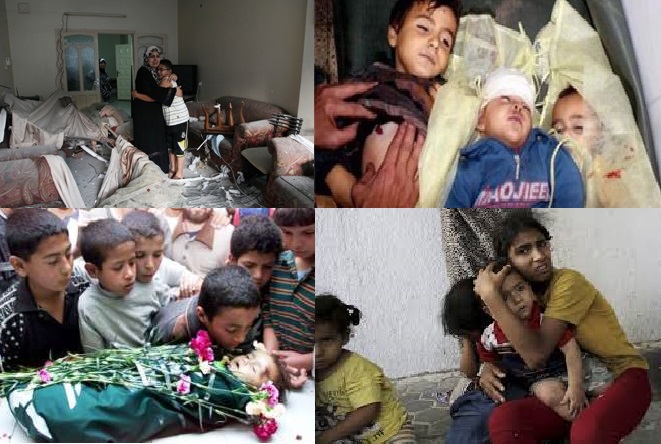

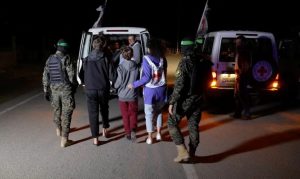

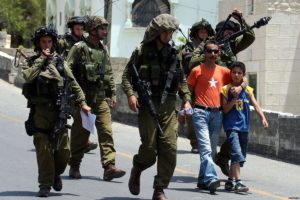
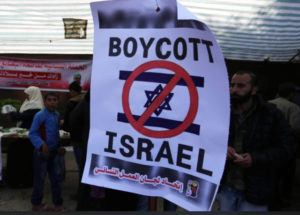
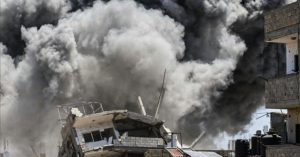
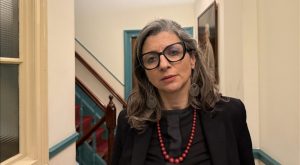

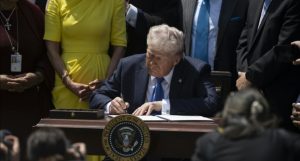
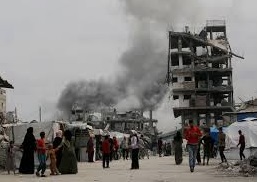
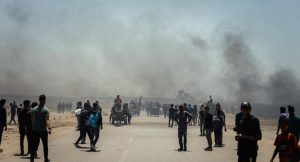


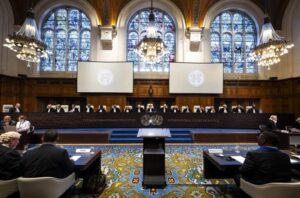
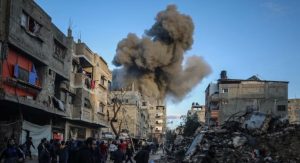




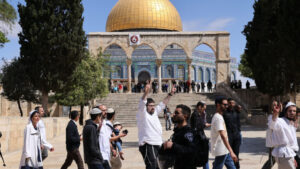
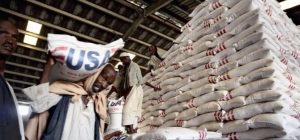

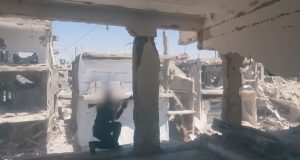
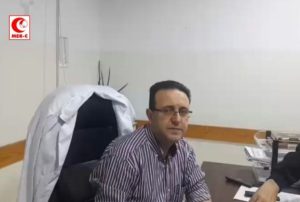


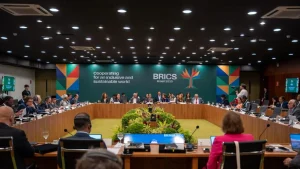



 Mina Indonesia
Mina Indonesia Mina Arabic
Mina Arabic